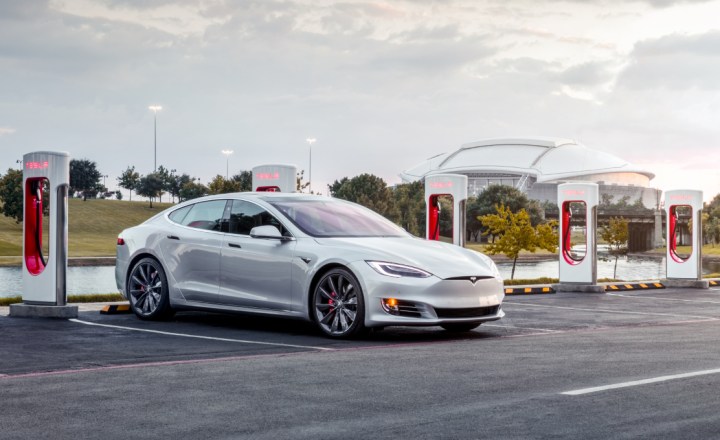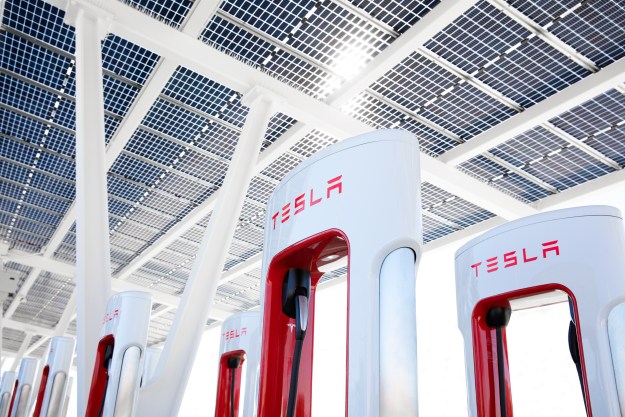
A bunch of photos posted by Electrek this week indicate the imminent opening of two stations in California, each with 40 Superchargers for Tesla’s electric cars.
One is located in tiny Kettleman City (population around 1,400), about halfway between Los Angeles and San Francisco, just off Interstate-5, while the other is in even-smaller Baker on Interstate-15, between Los Angeles and Las Vegas.
As its name suggests, a Supercharger can replenish a Tesla car’s battery in ultra-quick time compared to regular charging systems. For example, in the space of just 30 minutes a Supercharger can grant a Model S 170 miles of driving range.
As Electrek points out, the new stations are part of Tesla’s strategy to construct larger charging stations with facilities that people can enjoy during and after their vehicle charges. They’re really aimed at long-distance drivers, hence their placement in small communities along busy highways connecting major cities.
The stations include solar arrays above the carports that will provide some of the power for the chargers (during busy times the stations will have to tap into the local grid), while a large “lounge” area on the site will reportedly showcase Tesla Energy products such as its solar panels and Powerwall battery packs.
The new stations look to be completed and ready to launch, and insiders reportedly told Electrek that Tesla is “rushing to bring them both online soon.” Some media reports suggest they could flip the switch before the weekend to coincide with the semitruck unveiling.
As more Tesla cars hit the road, we’re going to see an increasing number of these bigger Supercharger stations appearing along major routes. Hopefully the greater capacity will mean less frustration among drivers who can find themselves waiting for a charging spot, though this is usually in built-up areas where some users leave their car parked long after charging has finished. The isolated locations of the two new stations, away from large communities, should mean these sites escape the problem of Supercharger hoggers.
While these two California sites will be the largest Supercharger stations to open in the U.S., Shanghai is still home to the largest in the world, with a station offering 50 Superchargers.
Editors' Recommendations
- Tesla to begin production on new, more affordable models
- Tesla faces new rival as a tech giant launches its first EV
- New Model 3 ‘takes out the baby fat,’ Tesla designer says in new video
- VinFast is bringing a mini electric SUV to the U.S., and maybe a pickup, too
- Tesla Cybertruck: rumored price, release date, specs and more



